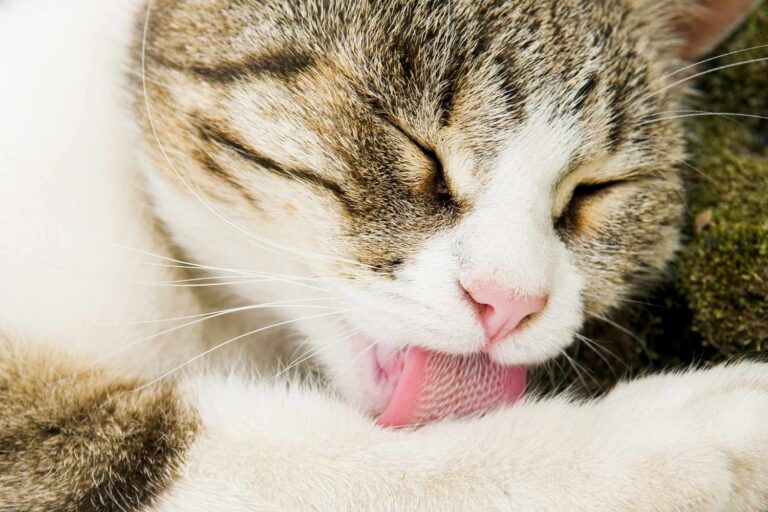Have you ever wondered why cats’ tongues feel so rough when they lick you? It turns out that there’s a fascinating reason behind this unique texture, and it benefits cats in several ways. Let’s dive deeper into the world of cat tongues and uncover the secrets behind their roughness.
Cats’ rough tongues serve multiple purposes, starting with grooming and cleaning. The rough texture helps them to keep their fur clean and free from tangles and debris. When cats lick themselves, the tiny, backward-facing barbs called papillae on their tongues act like a natural comb, removing dirt and distributing oils throughout their fur.
But grooming is not the only function of a cat’s rough tongue. It also enhances their sense of taste. The papillae on their tongues allow them to fully experience the flavors of their food and detect subtle changes in their environment. This unique texture gives cats an advantage when it comes to enjoying their meals and exploring their surroundings.
Furthermore, cats’ rough tongues play a role in water uptake. The papillae create a capillary action that helps cats efficiently lap up water, ensuring they stay hydrated. This is especially important for cats, as they have a low thirst drive and might not drink enough water if it weren’t for their rough tongues.
So, the next time a cat licks you with its rough tongue, remember that it’s not just a sign of affection but also a testament to their incredible grooming abilities, enhanced taste sensation, and efficient hydration method. Cats truly are fascinating creatures, and their rough tongues are just one of the many unique features that make them so special.
Grooming and Cleaning
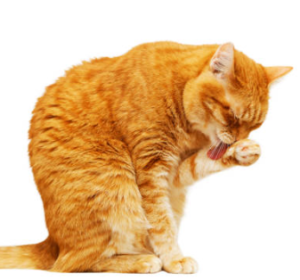
So, how exactly do their rough tongues accomplish this? It all comes down to the tiny structures called papillae. These backward-facing barbs give their tongues the rough texture that we often feel when they lick us. The papillae act as natural grooming tools, helping cats to remove dirt, loose hair, and any other unwanted particles from their fur.
Think of their tongues as a built-in brush. As they lick themselves, the papillae catch and trap any loose hair or debris, preventing it from settling on their fur. This not only keeps their coat looking pristine but also reduces the risk of hairballs forming in their digestive system.
Furthermore, cats’ rough tongues stimulate the production of natural oils in their skin, which helps to keep their fur healthy and shiny. It’s like having a self-care routine that ensures they always look their best!
Next time you see your feline friend meticulously grooming themselves, you can appreciate the incredible tool they have at their disposal – their rough tongues.
Taste Sensation
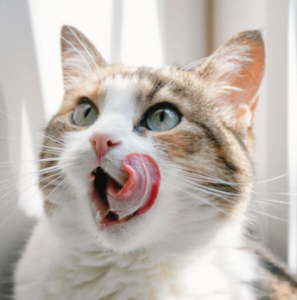
Imagine if you had taste buds on sandpaper. That’s what it’s like for cats! The rough texture of their tongues helps to break down food and spread it across their taste buds, intensifying the flavors. This is especially important for cats, as they are obligate carnivores and rely on their sense of taste to determine the quality and nutritional value of their food.
In addition to enhancing their taste experience, the rough texture of cats’ tongues also helps them to groom themselves effectively. The tiny, backward-facing barbs called papillae on their tongues act like a natural brush, removing dirt, debris, and loose hair from their fur. It’s like having a built-in grooming tool!
Papillae Structure

Not only do the papillae assist in grooming, but they also serve another important purpose – scraping meat off bones. Cats are carnivores, and their tongues are perfectly adapted for this diet. The rough texture of their tongues allows them to efficiently strip meat from bones, aiding in their consumption of prey or food.
The papillae structure of a cat’s tongue is truly remarkable. It not only helps them maintain their cleanliness but also enables them to effectively consume their food. This unique adaptation showcases the incredible abilities of cats and their specialized anatomy.
Water Uptake
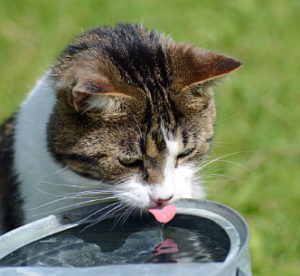
When a cat drinks water, it extends its tongue and rapidly laps it against the liquid surface. The backward-facing barbs on the tongue, known as papillae, help to create a sort of mini water column. As the cat pulls its tongue back into its mouth, the column of water adheres to the tongue’s rough surface due to the capillary action.
This efficient method of water uptake enables cats to stay hydrated even in arid environments. It’s fascinating how their rough tongues are not only useful for grooming but also serve a vital function in ensuring their hydration needs are met.
Communication and Affection
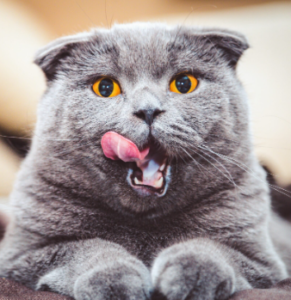
When a cat grooms another cat, it is called allogrooming. Through allogrooming, cats establish social hierarchies and maintain group cohesion. It is a way for them to reinforce their social relationships and show care for one another. The rough texture of their tongues aids in this process, as it helps remove dirt and debris from the fur, keeping it clean and healthy.
In addition to grooming, cats also use their tongues to show affection through gentle nibbles, often called “love bites.” These nibbles are a way for cats to mark their territory and leave behind their scent through saliva. It is a behavior that is commonly observed in cats and is a sign of their affection towards their owners or other cats they are close to.
Allogrooming
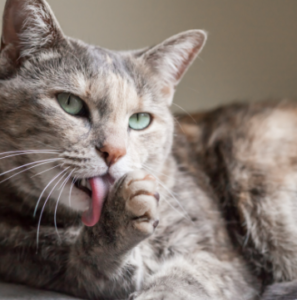
This grooming ritual not only helps cats bond with one another but also plays a crucial role in maintaining social order within a group of cats. Through allogrooming, dominant cats assert their authority and establish their position in the hierarchy, while subordinate cats show respect and submission.
Allogrooming is not limited to cats within the same social group. Cats may also engage in grooming behaviors with humans, particularly those they trust and consider part of their social circle. This mutual grooming between cats and humans further strengthens the bond and promotes a sense of belonging.
In conclusion, allogrooming is an essential social behavior for cats. It allows them to establish social hierarchies, maintain group cohesion, and strengthen social bonds. So, the next time your cat offers to groom you, consider it a sign of trust and affection.
Love Bites
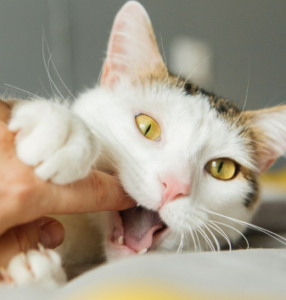
Cats have a unique way of expressing their love and affection, and one of these ways is through gentle nibbles. When a cat gives you a love bite, it may seem like a playful gesture, but it actually serves a deeper purpose. By using their rough tongues to nibble on you, cats are marking you as part of their territory. Their saliva contains pheromones, which are scent chemicals that cats use to communicate with each other. By leaving behind their scent on you, they are essentially claiming you as their own and showing their affection.
This behavior is not limited to humans; cats also use love bites to communicate with other cats. When cats groom each other, they are not only keeping each other clean but also reinforcing their social bonds. By nibbling on each other, they are exchanging scents and strengthening their connection. It’s their way of saying, “You are part of my family.”
So, the next time your cat gives you a gentle love bite, remember that it’s their way of showing affection and marking you as their own. It’s a unique behavior that highlights the strong bond between cats and their humans.
Frequently Asked Questions
Why do cats have rough tongues?
Cats have rough tongues due to the presence of tiny, backward-facing barbs called papillae. These barbs give their tongues a rough texture and serve multiple purposes.
How do cats use their rough tongues for grooming?
Cats use their rough tongues for grooming by licking their fur. The papillae on their tongues help to remove dirt, tangles, and loose hair, keeping their coats clean and well-maintained.
Do cats’ rough tongues have any other functions?
Yes, apart from grooming, cats’ rough tongues also aid in scraping meat off bones and enhance their sense of taste. The texture of their tongues allows them to fully experience the flavors of their food.
Can cats drink water efficiently with their rough tongues?
Yes, cats’ rough tongues play a role in their water intake as well. The papillae on their tongues create capillary action, enabling them to lap up water efficiently and stay hydrated.
Do cats use their tongues for communication?
Yes, cats use their tongues to communicate and show affection. They groom other cats or humans as a way of bonding and strengthening social relationships.
What are “love bites” from cats?
“Love bites” are gentle nibbles that cats give as a sign of affection. They use their rough tongues to leave behind their scent through saliva, marking their territory and expressing their love.
